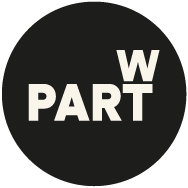Built Barriers
Part W’s Built Barriers campaign is building a national visual archive of everyday design decisions that exclude, limit, and undermine. From underlit walkways to inaccessible spaces, these barriers often go unseen — unless you’re the one being excluded.
Part W x Festival of Place: Built Barriers Event
All are welcome to join our next event for the campaign. We’re teaming up with Festival of Place to host an online workshop exploring the everyday obstacles women face in the built environment.
A mix of inspiring talks plus an interactive workshop, the event will be an opportunity to work collaboratively with others in the built environment looking to challenge the everyday obstacles that our Built Barriers campaign has shown us exist across the built environment.
Date: Wednesday 3 December 2025
Time: 1pm-3pm
Venue: Online
Why it matters
The spaces we design shape people’s lives. But far too often, they send quiet signals about who does and doesn’t belong. Let’s start documenting the flaws — and begin designing them out.
Every story, every image helps build a case for a more inclusive built environment.
What does a ‘barrier’ look like in your everyday environment?
At Coffey Architects, Associate Director Margaret Ravenscroft turned this question into a simple but powerful team exercise as part of the Built Barriers campaign.
“We held an informal lunchtime chat — no slides, no agenda — just space to share what we’d noticed in our surroundings. From poor lighting to awkward layouts and under-considered details, the barriers came quickly once we started talking.”
Each team member was then invited to submit one image and a short caption describing a barrier they’d seen or experienced. The result? A collaborative studio submission, shared with Part W and amplified through the practice’s own channels.
“People felt they could contribute even if they weren’t usually vocal on this topic. And submitting as a group took the pressure off.”
Let’s document the barriers — and start designing them out.
“This is about experiences we have in person, critiquing the reality of the built environment – rather than disappearing into the digital sphere. This way we can understand the physical and also emotional responses to real places and spaces. We do not want people to put themselves in uncomfortable or dangerous environments, but draw attention to the everyday frustrations.”
Our Statements
In Solidarity… An Open Letter
We, the Part W collective, speak out against the murder of George Floyd and the violent actions of the police. We stand in solidarity and call for others to join with us in shouting out that black lives matter.
An Open Letter…. In mourning, and ideas for change
Part W is appalled by the murder of Sarah Everard. As an action group of women working in the built environment, we‘re heartbroken by the seemingly casual attitudes of many in society towards the safety of women and girls in cities - and the failure to bring about change.


